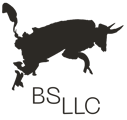Streamline Your Business with Comprehensive HubSpot Setup: CRM, Sales, Marketing, and Service Integration
Overview
Below you will find a comprehensive guide for HubSpot Module Setup. These processes are designed to streamline the implementation of the HubSpot CRM, Sales Hub, Marketing Hub, and Service Hub. BS LLC is a certified HubSpot Partner that ensures that your teams are well-equipped to leverage all the features of HubSpot, enhancing efficiency, customer engagement, and overall business growth.
CRM Setup
The CRM setup is the foundation of your HubSpot implementation, focusing on aligning strategy, optimizing data, and customizing the platform to your business needs.
- Kickoff Call/Workshop: Initiate the process with a detailed session to align your business objectives, KPIs, and roles.
- User and Team Setup: Establish groups and permissions, ensuring that everyone has the right access and training.
- Integrations & MarTech Stack Audit: Connect and optimize your current tools with HubSpot for increased efficiency.
- Account Configuration: Personalize your account settings including time zone, currency, branding, and more.
- Domain Connection: Link your digital assets to HubSpot for cohesive branding and tracking.
- Properties, Objects & Associations Labels: Customize data collection according to your business needs.
- Personas & Lifecycle Stages: Define and align customer segments and their journey stages.
- Scrub & Import Data: Clean and organize existing data for accuracy and actionable insights.
- Lead Assignment & Scoring: Set up systems for managing and prioritizing leads.
- Upload Files and Assets: Centralize and manage your marketing and sales materials.
- Create Templates and Snippets: Develop email templates and snippets for efficient communication.
- Task Automation and Tracking: Automate and monitor tasks to enhance productivity.
- List Creation and Strategy: Strategize and manage contact lists for targeted communications.
- Reports & Dashboards: Develop custom reports and dashboards for insights into your marketing and sales performance.
- Product Library Establishment: Catalog your products or services for streamlined tracking.
- HubSpot Payments: Set up and manage payment processes within HubSpot.
Sales Hub Setup
Optimize your sales process with the Sales Hub setup, focusing on team management, lead handling, and sales enablement.
- Review Team/Groups & Partitioning Rules: Examine and set up team structures and data access rules.
- Lead Assignment & Scoring: Refine how leads are distributed and prioritized among the sales team.
- Creating Sales Goals & Forecasting: Set targets and use forecasting tools to manage sales expectations.
- Setup Meetings Tools: Implement scheduling tools for efficiency and better client engagement.
- Setup Inbound Calling: Utilize HubSpot’s calling features for seamless communication.
- Upload Files and Assets: Organize all sales-related materials for ease of access.
- Create Templates and Snippets: Develop specific sales templates for emails and documents.
- Automate and Track Tasks: Enhance sales productivity with automated task management.
- Review Lists and Strategy: Ensure efficient segmentation and targeting of leads.
- Setup Deal Pipeline/Stages: Visualize and manage sales progress with customized pipelines.
- Set up Playbooks: Implement guidelines and strategies for consistent sales processes.
- Create Sequences: Develop a series of automated actions to engage and nurture leads.
- Create CTAs: Develop actionable prompts to drive leads through the sales funnel.
- Connect Forms: Integrate forms for lead capture and information gathering.
- Automation & Workflow Optimization: Streamline sales processes with automated workflows.
- Reports & Dashboards: Customize sales reports and dashboards for performance tracking.
- Conversations Inbox & Live Chat: Engage leads and customers directly with real-time communication tools.
- Establish Product Library: Organize your product offerings for easy reference and tracking.
- Build Quote Templates & E-Signatures: Streamline the proposal and closing processes.
Marketing Hub Setup
The Marketing Hub setup is designed to enhance your marketing efforts, focusing on audience understanding, content management, and campaign execution.
- Review Team/Groups & Partitioning Rules: Assess team structures and access to ensure efficient operations.
- Integration Audit: Connect and optimize essential marketing integrations for broader reach and efficiency.
- Understanding Marketing and Non-Marketing Contacts: Distinguish between different contact types for targeted marketing.
- SEO Strategy: Implement SEO best practices to increase organic reach and effectiveness.
- Upload Files and Assets: Centralize marketing materials for easy access and use.
- Template Setup: Create and manage templates for various marketing assets.
- Email Template Creation: Develop and standardize email communication.
- Form Creation and Connection: Set up forms for lead capture and information gathering.
- Task Automation and Tracking: Streamline marketing activities with automated task management.
- List Review and Strategy: Strategize for effective segmentation and targeting.
- Social Media Connection: Integrate and manage social media platforms for cohesive campaigns.
- Conversations Inbox & Live Chat: Engage prospects and customers directly and in real-time.
- Blogs Setup, Creation & Subscriptions: Develop a content strategy for ongoing engagement.
- CTA Creation: Develop compelling calls-to-action to guide user behavior.
- Add Videos to Content: Incorporate video content for enhanced engagement.
- Setup Ads, Audience Lists & Campaigns: Manage ads and audiences for targeted advertising.
- Campaigns & Events Management: Coordinate and track marketing campaigns and events.
- Reports & Dashboards: Customize marketing reports and dashboards for insights.
- Client Offboarding: Formally conclude marketing engagements with a structured process.
Service Hub Setup
Optimize your customer service processes with the Service Hub setup, focusing on customer interaction, support optimization, and service quality improvement.
- Review Team/Groups & Partitioning Rules: Ensure efficient team structure and data access for customer service.
- Setup Meetings Tools: Implement scheduling tools to facilitate customer interactions.
- Setup Inbound Calling: Use HubSpot's calling tools for efficient customer communication.
- Upload Files and Assets: Organize customer service materials for quick access.
- Create Templates and Snippets: Standardize customer communication with templates.
- Task Automation and Tracking:
